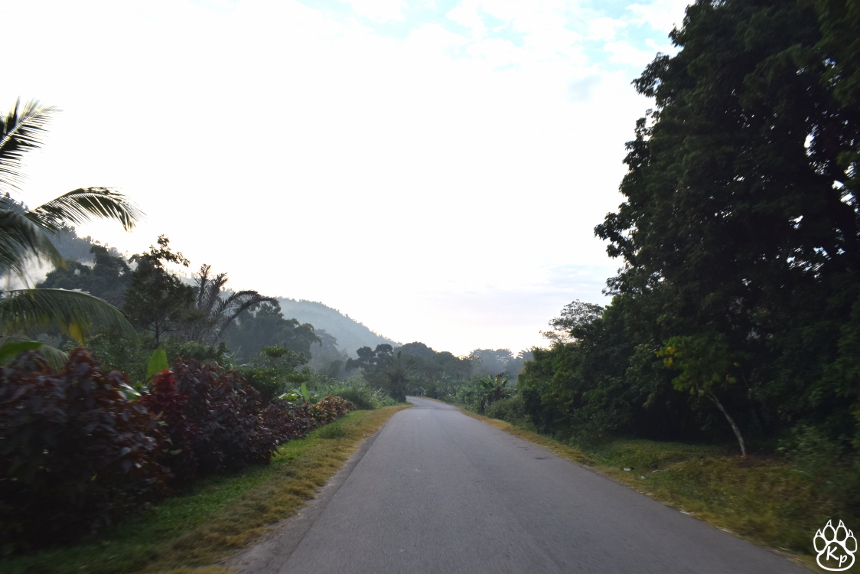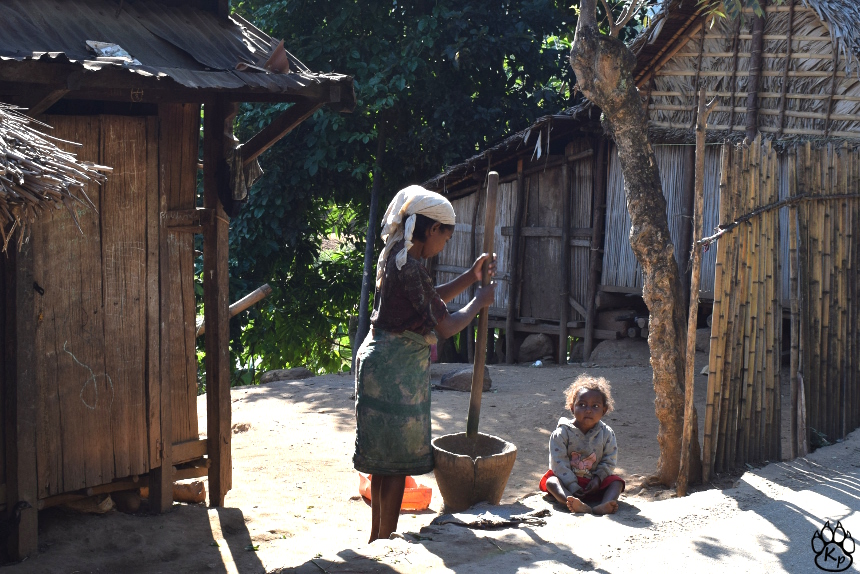
Our work here takes us daily between Sangasanga forest, accessible through a bridge in Kianjavato, and KAFS, where we live. Usually we have a car to move around, but given we have to share the car with the other groups of volunteers and project workers, we often make our way back on foot. And anyways, more often than not the car is simply broken or missing parts!
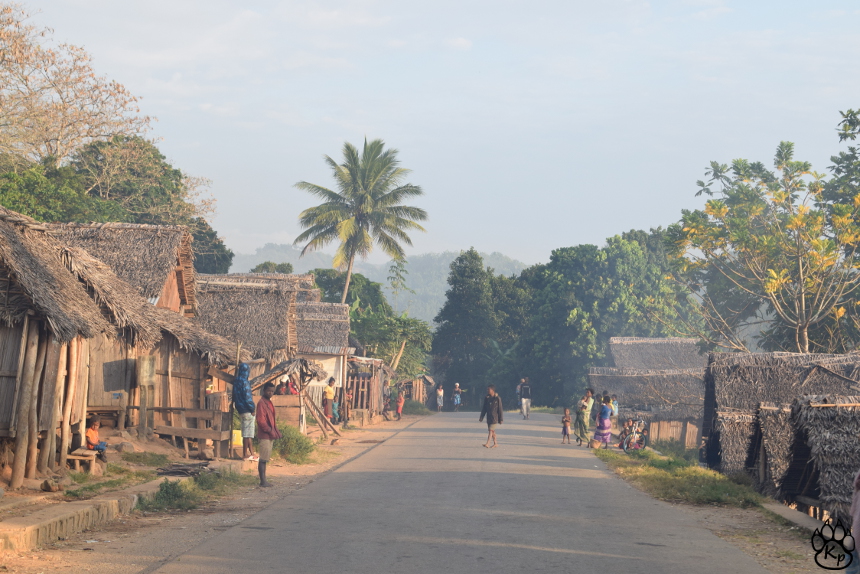
Walking back and forth between KAFS and Kianjavato sees us pass through the villages of Ambalahosy and Ambodibonary, walk along the river, next to rice paddies, banana and coffee plantations, see chickens, ducks, geese, pigs and zebus feeding on the side of the road.
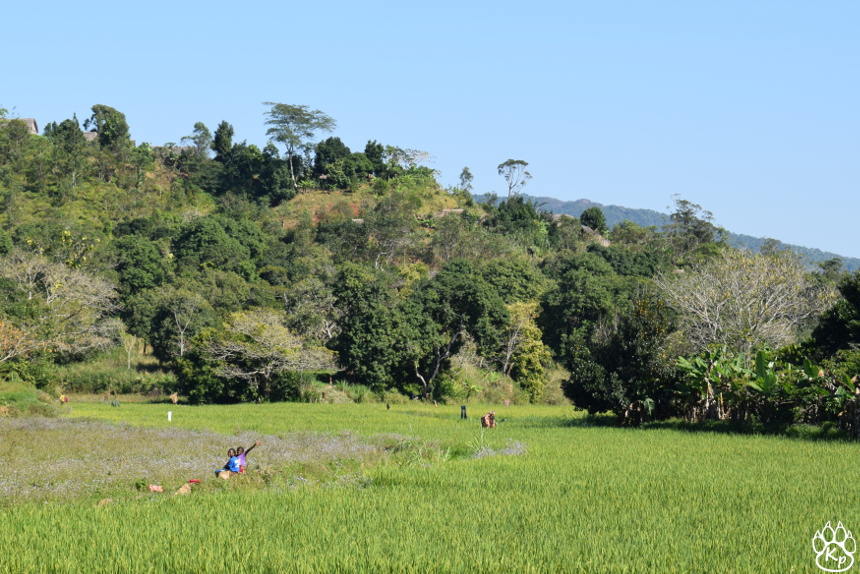
We also cross path with a lot of different people. Every time we walk by a village, the children will pop up from behind the houses screaming “Salut vazaha!”. This is probably the first phrase you will learn when you go to Madagascar, it means “Hello foreigner!”. Children love to scream it, and they will go on screaming it until you disappear far down the road. And at that point you will have the children from the next village saying hello.
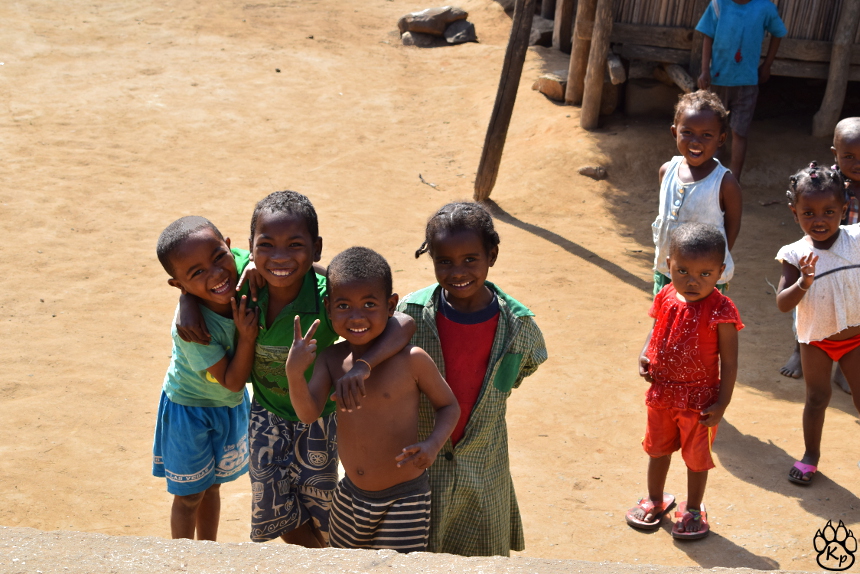
The women in their colorful lambas, skirts made of fabric just wrapped around their waist, will be sorting through rice grains or coffee beans, cooking or hanging clothes to dry. You can see them carrying little children on their backs, tied with only a piece of fabric like it’s common tradition throughout Africa, but you also often see men carrying the children, a thing that I haven’t seen on the mainland.
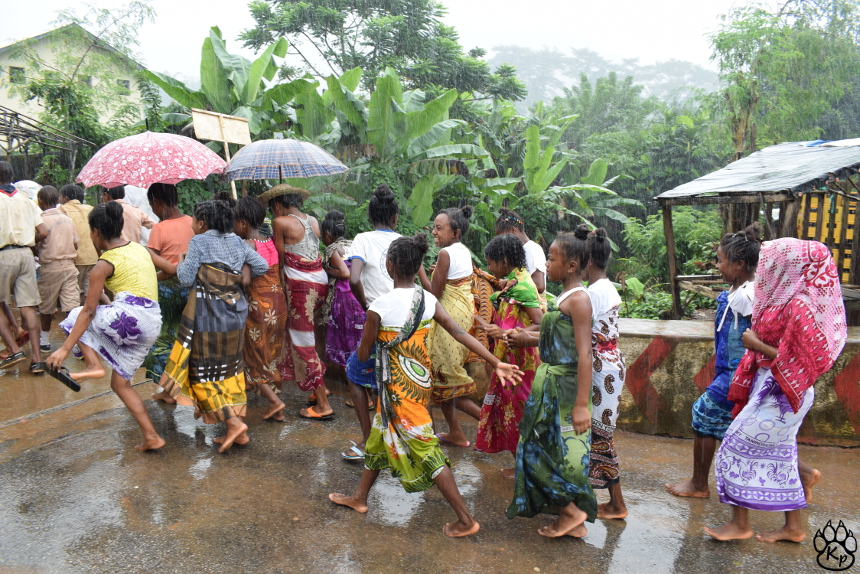
If you get hungry while walking, you’re in luck! Every few meters you will find a stand selling food. You can find fresh seasonal fruit, peanuts or mofo, the typical fried bread, which can either be plain, with vegetables inside, or with fruit, like banana or coconut. If you like meat, you can get meat skewers or sambos, triangular spring rolls with minced meat and veggies.
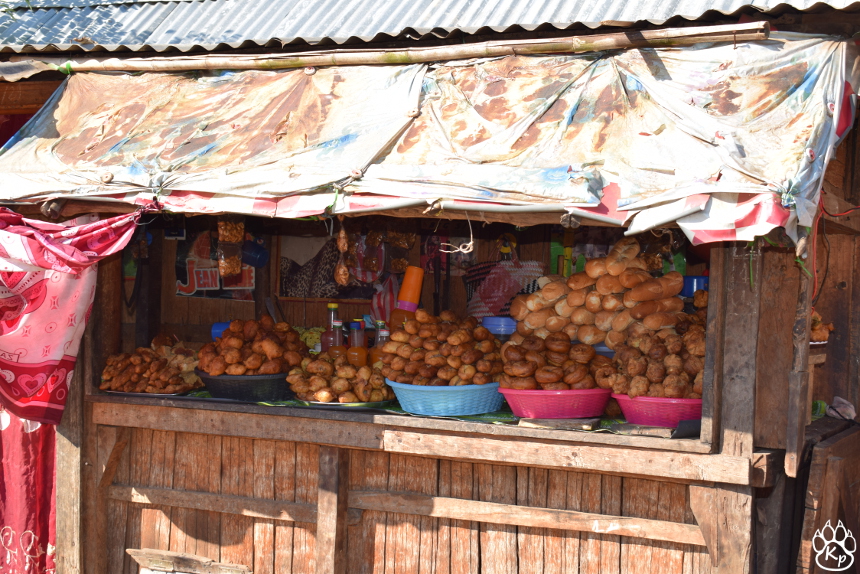
In the end, even after a long day in the field, we often prefer to walk the 4km back, get food on the way, say “Hi!” to smiling strangers and live the reality of the culture we are immersed in.
